
Solo in Japan: No-Nonsense Guide for Traveling Alone
- Written by: Himanshi Shah
Seven years of solo travel has taught me this: spending time alone in a foreign country reveals versions of yourself that you barely knew existed.
And few places make traveling alone as seamless as Japan.
Trains run on time down to the second, personal space is prioritized, and most Japanese cities rank among the safest in the world. Introverts will feel at home even in a busy spot, and extroverts will find endless opportunities to party, meet people, sing karaoke, and stay out far too late.
Sure, the idea might be a little daunting at first. The language is unfamiliar, the culture feels impossibly polite, and the spiderweb of train lines at Shinjuku can short-circuit your brain. But after eight solo trips to the Land of the Rising Sun, I can tell you for a fact that there's no better country to travel alone than Japan.
You wake up when you want, duck into any moody izakaya pub as you please, stay one night at a temple, and another in a ryokan inn, make midnight konbini runs, and wander until your feet hurt every day—it's pure bliss.
Based on my personal experiences and stories gathered from our extensively traveled team, this article covers everything you need to know to make the best of your solo vacation.
Japan is a large country that has much to offer in basically all regards. From culture to food, here’s how to make the most out of Japan if you’re traveling alone!
(Main image: PIXTA)
(This article may contain promotions)
- Table of Contents
-
- Before You Go: Planning for a Solo Trip
- Choosing the Right City (or Region) for your Trip
- Budgeting for One: Accommodation, Food, Transport
- Safety & Practical Tips
- Where to Stay Solo in Japan
- Eating Out Alone in Japan
- Best Things to Do as a Solo Traveller
- How to Meet Locals / Other Travellers
- When You Want Peace & Quiet
- Get Ready for Your Solo Adventure
Before You Go: Planning for a Solo Trip
Best times to travel alone in Japan
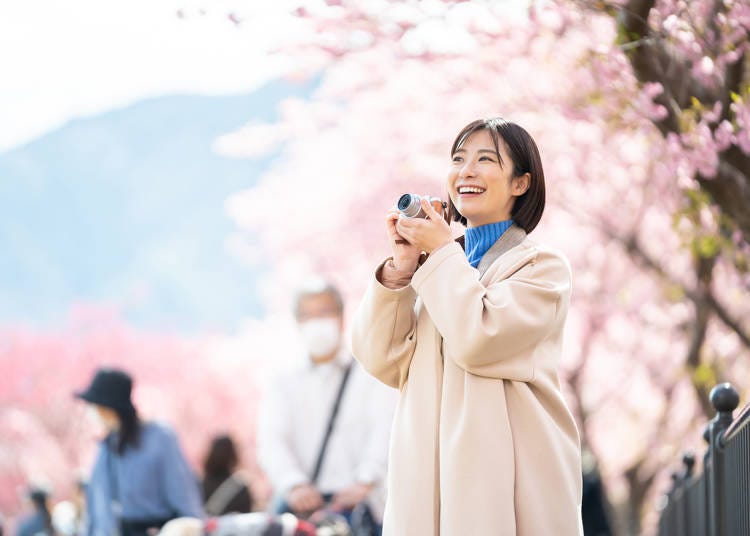
Come springtime, thousands of tourists flock to Japan from late March to mid-April to see the cities awash in pastel pink cherry blossoms. Shops fill with limited-edition snacks, and parks turn into hanami (flower-viewing) parties that welcome solo travelers.
It’s gorgeous, but it’s also chaotic. Prices shoot up, trains get packed, and even basic single rooms sell out weeks in advance. If you’ve got your heart set on cherry blossom season, book early and expect crowds.
Autumn is our favorite, with cooler weather, fiery leaves, and fewer people. Winter is a close second, especially if you enjoy snow, onsen, and that mysterious ambiance you only get in cold places. As an added perk, non-ski hotels tend to have cheaper rates than usual.
Summer is heavy on festivals and humidity, but it’s still a good time to go visit if you’re seeking street food, fireworks, and late-night energy.
Staying Connected in Japan
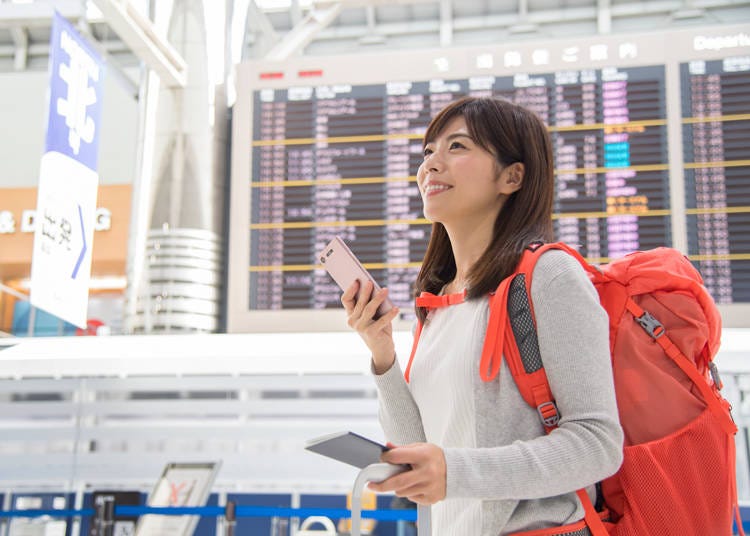
Japan’s internet is fast and reliable, but public Wi-Fi? Not so much. You’ll find it here and there—cafés, stations, convenience stores—but it’s often password-protected, finicky to connect, or somewhat slow. Nevertheless, if budget is a concern, the free Japan Wi-Fi Auto-connect app by NTT Broadband Platform automatically connects to over 50,000 free hotspots without individual registrations.
If you're traveling solo and hopping on buses or trains right from the airport, sort your internet before you even leave the terminal.
SIM Cards
If you want instant access without carrying an extra device, eSIMs and physical SIMs are the most convenient choice. If your smartphone supports it, an eSIM is one of the easiest and fastest ways to get connected. You can purchase and activate a data plan online before arrival or as soon as you land, without needing to purchase a physical SIM card, and use your phone as normal. (Learn more about eSIMs here.) You’ll also spot SIM cards at train stations, Don Quijote, and even 7-Eleven, though prices tend to be better online.
Pocket Wi-Fi
You can rent one on the spot at any international airport, but it’ll usually cost more than pre-booking it. The better option is to reserve your device online before your trip, and then pick it up at the airport. Narita, Haneda, Kansai, and most major airports have counters or even convenience store pickups, making the whole process smooth. Check out this article for more information on renting a pocket Wi-Fi.
Choosing the Right City (or Region) for your Trip
Want to be in the middle of a neon maze, eating late-night noodles, slipping into sake bars, and staying close to trains that can take you anywhere? Tokyo and Osaka are the obvious choices.
For slower travel and fewer people, head to Kyushu, Shikoku, or walk the old Nakasendo trail through quiet mountain towns in Nagano and Gifu. The cities of Kyoto, Kanazawa, and Takayama also strike a solid balance. They are walkable, culturally rich, and crowded, but without being overwhelming.
Hokkaido, with its powdery landscapes, seafood markets, and unreal nature, welcomes lone explorers. Tohoku and the deeper parts of Nagano feel even more remote, with lower price points and a slower rhythm that we solo travelers tend to love.
Don’t overstuff your itinerary. Japan rewards those who leave room for the unexpected.
Budgeting for One: Accommodation, Food, Transport
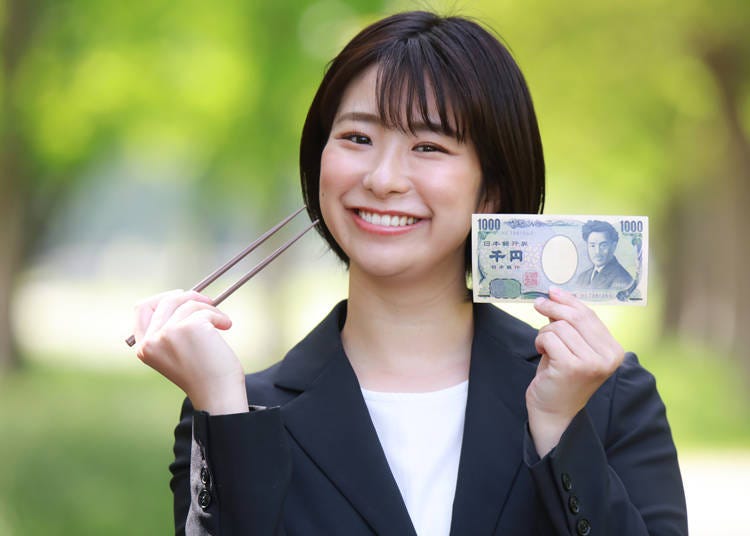
Traveling solo in Japan doesn’t have to wreck your wallet. It’s surprisingly budget-friendly when you're not splitting the cost of someone else’s comfort. Capsule hotels, business hotels, and solo-friendly ryokans make it easy to find a room without overpaying. Meals can be as affordable or splurge-y as you like, and getting around is simple with IC cards or regional rail passes.
Sample Budget for Solo Travel in Japan
One Week in Japan (Flashpacker Style)
If you're traveling flashpacker style, you'll likely stay in a mix of affordable business hotels and capsule stays. Most meals will come from konbinis, with the occasional sit-down dinner. Add in a few nights out and a couple of souvenirs, and a one-week solo trip to Japan will cost around 86,000 to 162,000 yen.
- Accommodation (hostels, capsules, business hotels): 30,400–57,850 yen
- Food (konbini meals, ramen, casual eateries): 20,240–30,370 yen
- Izakayas & Cocktail Bars (2-3 nights out): 5,780–14,460 yen
- Transportation (IC cards + one intercity trip): 11,570–21,690 yen
- Attractions & Experiences (temples, museums, tours): 5,780–14,460 yen
- Pocket Wi-Fi or SIM : 3,620–6,510 yen
- Miscellaneous (snacks, toiletries, souvenirs): 8,670–17,350 yen
Two Weeks in Japan (Semi Luxury)
Want to splurge on your solo vacation to Japan? Stay in design-focused boutique hotels, a few nights in a ryokan with a zen garden, cross-country rides on the Shinkansen, mid-range restaurants known for seasonal menus, and rooftop bars with skyline views. Here's what two weeks at that pace might cost: 462,900–798,100 yen.
- Accommodation (11 nights in chic boutique hotels, 2–3 nights in mid-range ryokan with meals): 202,400–361,500 yen
- Food (cafés, izakaya dinners, and 2–3 fine meals): 101,200–173,500 yen
- Izakayas & Cocktail Bars (5–6 nights out): 28,900–50,600 yen
- Transportation (JR Pass, reserved seats, day trips, local transit): 50,600–72,300 yen
- Attractions & Experiences (teamLab museum, Shibuya Sky, workshops, entrance fees): 28,900–57,800 yen
- Pocket Wi-Fi or SIM: 6,500–10,100 yen
- Miscellaneous (souvenirs, skincare, kitsch otaku finds): 43,400–72,300 yen
Safety & Practical Tips

Japan is one of the safest countries to travel alone, especially as a woman. Streets are well-lit, petty crime is less than in many Western countries, and despite language barriers, locals tend to go out of their way to help you out.
In most places, you won’t get unwanted attention, and female-only train cars and female-only hostels and capsule floors are common if that helps you be more relaxed. But exercise general caution, as you would in any other country.
Before arriving in Japan, download the Visit Japan Web app or access the website (https://www.vjw.digital.go.jp/), as it’s the official platform for pre-arrival immigration and customs procedures. You can register your details and generate QR codes to speed things up at the airport.
While in Japan, if you lose something, head to the nearest kōban (police box) or ask at the train station, and you’ll likely get your item back.
In case of emergencies, most tourist centers and hotels assist with translation, and larger hospitals have English-speaking staff on call.
Download Google Maps, Japan Travel by Navitime (for trains), Google Translate with "Japanese" offline, and Safety Tips Japan for alerts and emergency info.
Getting Around Alone
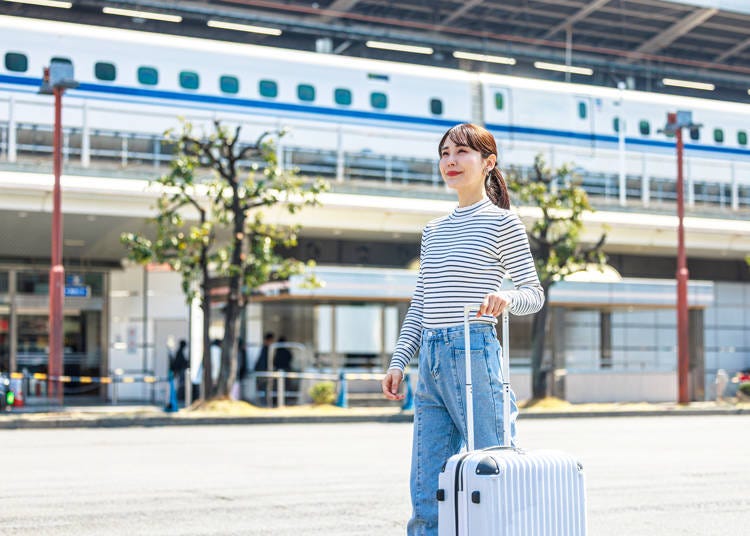
At first glance, Japan's transportation seems like a mess of train lines and bus timetables, but once you take the time to understand the routes, it’s pretty easy to navigate, even independently.
For long-distance travel, the Japan Rail Pass is a prepaid rail pass that gives you unlimited access to most Japan Rail (JR) trains, including many Shinkansen (bullet trains). It’s a fantastic deal for those solo explorers hoping to hit multiple cities across regions. But, it has to be purchased before you arrive in Japan and is worth the hefty cost only if you’re moving around a lot within a short time. For brief getaways, regional passes work out to be cheaper and more flexible.
Local trains are easy to navigate, even if you don’t speak a lick of Japanese. Most signs are in English, and apps such as Google Maps will guide you through transfers without guesswork. In bigger stations, staff are used to tourists. Have your destination pulled up on your phone or your question typed out in Japanese, and you’ll be fine.
Want to save yen and don’t mind taking it slow? Long-distance buses like Willer Express are much cheaper than trains, and their overnight routes double as accommodation.
Avoid taxis and Ubers, as they add up quickly when you’re covering the cost alone and there’s no one to split the fare with. But, if you must, then use S.RIDE or GO / Taxi app to hail a cab from your phone.
And if you’re tired of dragging a suitcase stuffed with Don Quijote finds, luggage forwarding services (Yamato or JAL ABC) can ship your bags between hotels or airports for a reasonable fee. You can drop it off at the airport counter, or your hotel concierge, or ask your hostel the location for the nearest participating convenience store.
For those who want to send their luggage to Narita before an international flight, make sure to do it at least a day in advance, as same-day delivery isn’t an option, and they won’t take it if you cut it too close.
Where to Stay Solo in Japan
Bouncing between cities or prefectures? Pick someplace near a major train station so you're not dragging bags across town at 6 AM or through crowded train lines.
If you're the tripod-toting type chasing crowd-free, envy-inducing solo shots of specific attractions, stay close to the spots you want to shoot. Being within walking distance means you can get there before the first train pulls in or stick around after the day trippers are gone.
Best Areas to Stay in Major Cities
In Tokyo, don't stay in Shinjuku unless you’re into serious partying, nightclubs, and staying out till sunrise. It’s a blast for nightlife, but not good if you value sleep or hate crowds.
Shibuya (near Yoyogi Park) Ueno, Asakusa, and Ikebukuro are amazing solo bases, as they are well connected, full of cheap eats, and noticeably quieter, with fewer tipsy office workers yelling at 2 AM.
For delicious coffee, secondhand shops, and a laid-back hipster scene, stay in Shimokitazawa. It's full of creatives, caffeine addicts, and trunks of chic vintage outfits to scour through.
Over in Kyoto, Higashiyama, and Gion are uber cinematic, with sloping alleys, wooden facades, and the occasional geisha slipping past if you’re lucky.
In Osaka, Namba and Shinsaibashi are packed with mouthwatering food and electric energy. That said, book your hotel just off the main square and you’ll still find pockets of calm.
Types of Accommodations
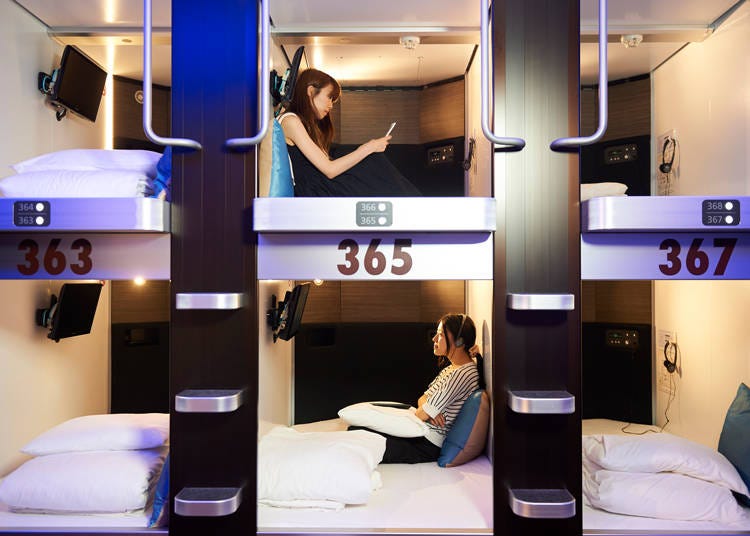
Capsule Hotels (Tokyo: 4,000 - 12,000 yen)
Mostly minimalist, wonderfully affordable, and nearly always comfy, capsule hotels are a solo traveler’s haven and excellent for short stays. What once catered mostly to salarymen hoping to catch a snooze, now draws in backpackers and curious explorers.
Big metropolises have plenty of futuristic pods, chic women-only towers, and even boutique-style versions with lounges, public baths, and reading rooms. Smaller cities have several capsule hotels to rest your head for the night. Just don’t expect space to reorganize any massive suitcases inside your capsule.
9h (nine hours) has sleek, design-forward capsule hotels across Japan, with several locations in Tokyo, two in Fukuoka, and one each in Sendai and Nagoya. There’s also a women-only tower in both Shinjuku and Kanda.
First Cabin is another standout name in the capsule hotel scene, with semi-private, spacious "cabins". You'll find branches in major cities across the country.
Umeda in Osaka is home to the world’s first capsule hotel from back in the ’70s and has plenty of other compact stays tucked between glass buildings and shopping arcades.
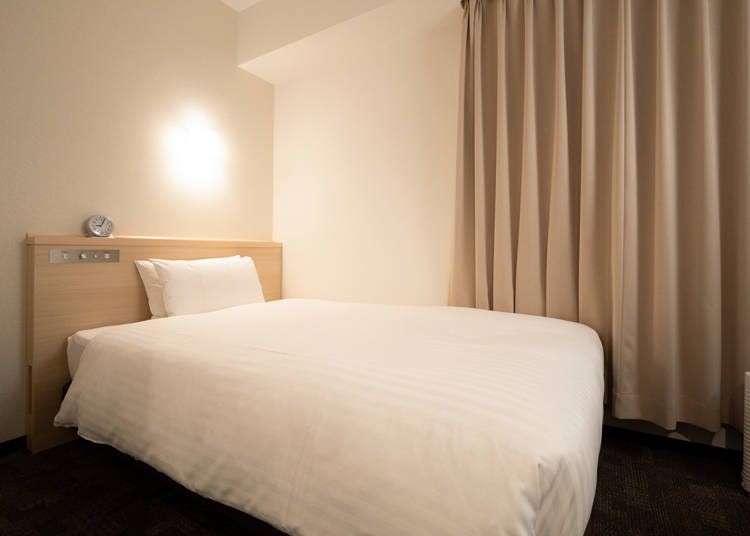
Business Hotels (Tokyo: 7,600–15,000 yen)
Claustrophobic but don't want a pricey hotel room? Opt instead for a “business hotel.” Dormy Inn, APA, and Mystays, to name a few, are popular chains that offer private rooms with everything you need for a few days in Japan. Expect clean beds, toiletries, fast Wi-Fi, and often even extras like a free public bath (nothing like a soak after a full day of exploring) or late-night ramen. They’re everywhere, easy on the wallet, and usually close to train stations—making them the MVP of solo stays.
Hostels (Tokyo: 3,800 yen (bunk in an all-female dorm)–12,000 yen (twin room with private bathroom))
Don’t let past experiences of creaky bunk beds and loud dorms put you off, as hostels in Japan are nothing like the ones you’ve suffered through elsewhere.
You’ll find everything from ultra-budget options with just a curtain for privacy, to semi-private beds with real partitions and reading lights.
The best ones have chill common areas, spots to eat your konbini dinner in peace, and no forced group activities. Awesome if you’re up for meeting people, and just as good if you want to be left alone.
Look for hostels with kitchens, cafés or bars if you want a bit of background buzz.
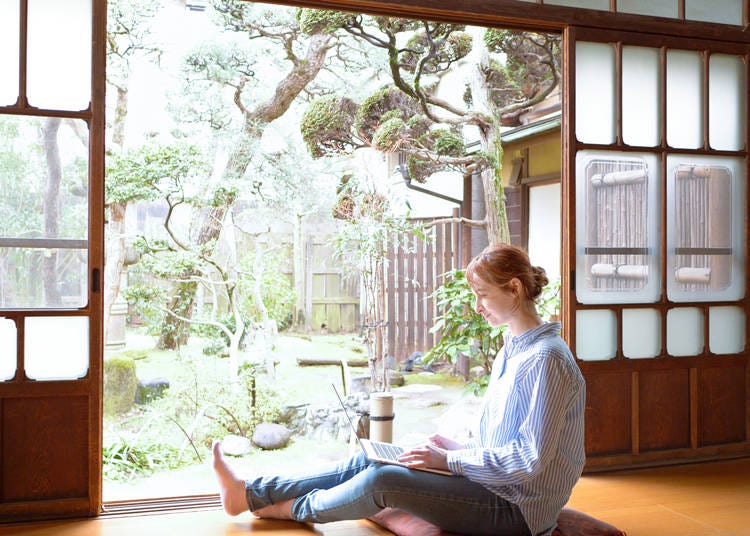
Ryokans (Tokyo: 6,500–14,000 (breakfast included))
Coming to Japan and not spending at least one night in a traditional ryokan inn is a grave mistake. Some are high-end escapes with landscaped gardens and multi-course dinners. Others are humble, cozy stays run by sweet Obasan (grandma) and Ojisan (grandpa) who’ll treat you like family.
Experience the soft tatami under your feet, unwind on a fluffy futon, slip into a yukata, and shuffle down to the on-site bath before digging into a slow meal served in the room or a spacious dining hall. It’s just as dreamy as it sounds, and even better when there’s no one around to rush you.
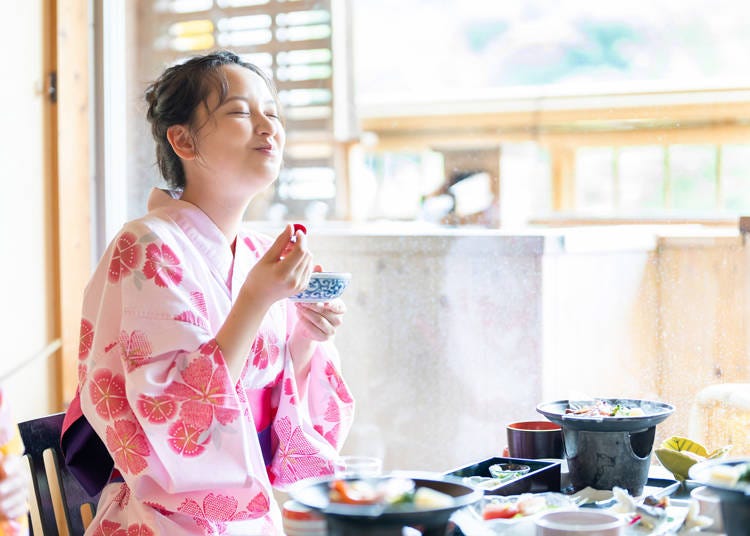
Not all Ryokans accept solo bookings, but the ones that do are worth hunting down. Filter carefully on Booking.com or Rakuten Travel, and don’t be afraid to reach out directly. Some of the best ones fly under the radar.
Eating Out Alone in Japan
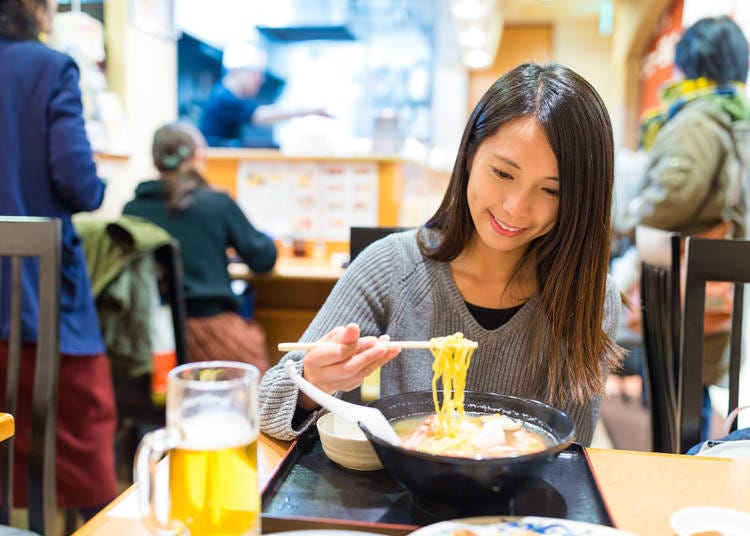
One of the best things about traveling solo in Japan? Eating alone is typical. No one bats an eye when you request a table for one. In fact, you’ll often be surrounded by salarymen, students, and other lone diners doing the same thing.
Where to Eat in Japan
Cafés and izakayas are solo-friendly by design and local eateries tend to have counter seating or small tables for one. Daytime cafés are perfect for slow meals or people-watching, and low-lit izakayas are splendid if you want to sip something and snack on light meals while feeling like the lead character in an indie film.
When dining solo, teishoku (set meal) is the way to go. They fill you up fast, are affordable, and give you a little of everything from rice, soup, pickles, and a main dish.
Vending machine ramen shops are another quintessential meal. You order by pressing buttons on a machine, hand over your ticket, grab a counter seat with partitions, and savor your meal. Some ramen restaurants have English item names too, so zero awkward interaction is required.
And when hunger strikes after a long day of exploring, but you can't be bothered with restaurants, Japan’s konbini meals come to the rescue. Grab a crispy Famichiki (breaded deep-fried chicken at Family Mart), a couple of onigiris, maybe some cold noodles, and whatever drool-worthy dessert is staring you down. It’s cheap, delicious, and way more satisfying than it has any right to be. Eat it on a park bench, in your capsule lounge, or the common area of your business hotel.
Vegetarians, vegans, or those with dietary restrictions should download HappyCow. It’s the best app for finding meat-free or allergy-conscious options across Japan, especially in the bigger cities. Some listings even include photos and Japanese menu translations, which helps a lot when you’re flying solo and not fluent in Japanese.
- Quick Bowls & Set Meals:
- Matsuya, Sukiya, Ootoya, Nakau
- Fast Food & Grill:
- Freshness Burger, Gyukaku
- Casual Izakaya:
- Torikizoku, Shoya, Uotami
- Family Restaurants:
- Gusto, Denny's, Saizeriya
- *Note:
- Many sit-down chains offer multi-language tablet or QR code ordering for convenience
Best Things to Do as a Solo Traveller
Day Trips from Major Cities
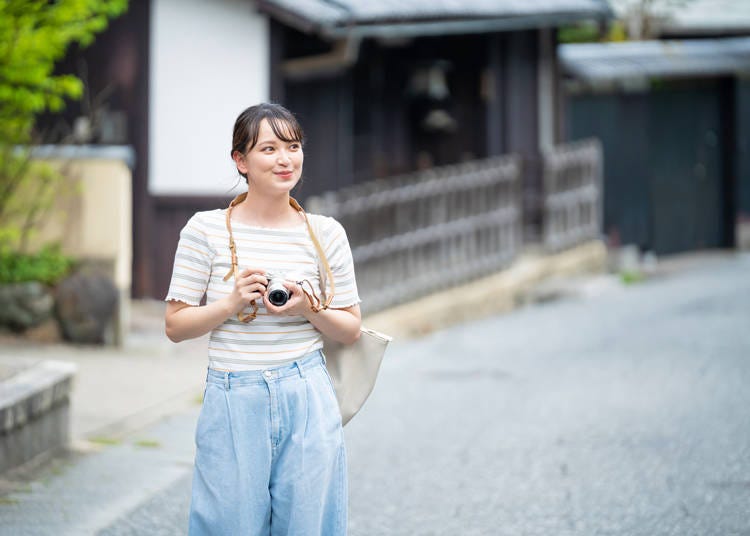
What we love most about vacationing alone in Japan is the complete freedom to follow your whimsy. Wait for the clouds to lift over Mount Fuji, travel to far corners for a Michelin-starred meal, or wander through a hipster backstreet. There’s no need to check in with anyone, compromise on your plans, or rush through important sights.
In Tokyo on a blazing summer afternoon and craving the sea? Take the train to the old capital of Kamakura for bamboo groves, ancient temples, and beaches, or escape the heat with a shaded forest walk at Mount Takao and sip a beer at the top.

Matcha addicts based in Kyoto should detour to Uji, a quiet riverside town beloved for its green tea, shrines, and unhurried pace of living. It's lovely for a day out with no fixed plans.
From Osaka, sure, you could visit Nara and bow to the deer, but if you’ve done that already, head to Koyasan. Less touristy with heaps of mystique, Koyasan is all about moss-covered graves, flickering lanterns, and forest silence. If you have the time, stay overnight in a shukubō (temple lodging). Eko-In and Shojoshin-In are incredible temple stays and both welcome solo guests.
Cultural Activities for Solo Travellers
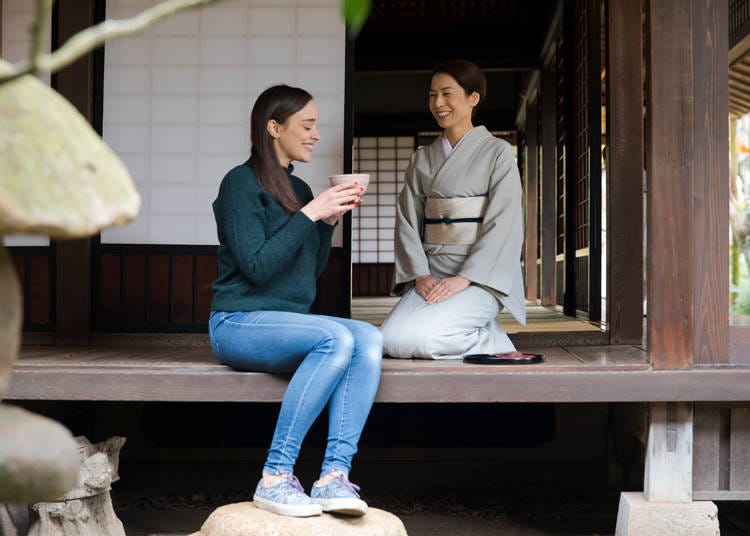
Tea ceremonies, kimono rentals, and cooking classes are easy to book through sites like Klook and Viator. Most require no prior experience and have a relaxed, welcoming vibe.
If you prefer being outdoors, follow river trails, slip into backstreets near old shopping arcades, or wander shrine paths. You’ll catch small, unscripted moments most people walk past.
For city views after dark, head to Shibuya Sky in Tokyo, and Mount Moiwa in Sapporo. Tripods are usually restricted but don't be shy to ask a fellow traveler for a quick photo in these breathtaking backdrops.
Late-night exhibits, tiny bars with four seats, and the occasional jazz spot make solitary evenings anything but empty. A shochu highball doesn’t hurt either.
Shopping Solo in Japan

Solo shopping in Japan is proper retail therapy. Curated stationery aisles at Loft, minimal-but-chic essentials at Uniqlo, and entire floors of electronics at Yodobashi—you can pretty much shop till you drop. And when your arms start to protest, most big department stores and electronics shops can deliver your purchases straight to your hotel. No need to wrestle five Muji bags on the train.
Flying out soon? Use the previously mentioned TA-Q-BIN service to send your luggage ahead and glide through your last day hands-free.
Recommended shopping areas:
・Tokyo: Shinjuku, Shibuya, Harajuku, Omotesando, Ginza, Ueno
・Osaka: Dotonbori, Shinsaibashi
How to Meet Locals / Other Travellers
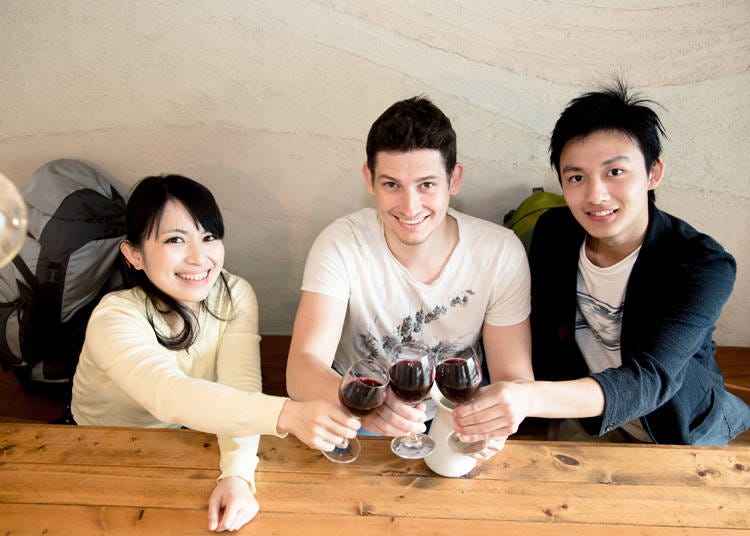
Japan isn’t big on small talk, but it’s still possible to meet people if you know where to look. Language exchange cafés in big cities are a fabulous start, all you have to do is find them on the MeetUp App or website, show up, grab a drink, and get talking.
Airbnb Experiences can be hit or miss, but the good ones feel like you're hanging out with a local friend who's an expert in Japanese art, food, or hidden gems. Hostels vary, as some have beer or wine nights while others are dead quiet. Also consider adding a food tour or pub crawl to your itinerary, as it can be a great way to meet locals and other travelers while learning more about the culture.
Coworking cafés are great for digital nomads who want to get things done while being around people. And if you're feeling social, Couchsurfing hangouts still happen via the App and usually attract a friendly, open-minded crowd of both locals and other tourists. Just exercise caution by meeting in public, sticking to group settings, and trusting your gut.
When You Want Peace & Quiet

After ticking off the big, busy spots, it’s natural to crave quiet. Slow down and take a dip in an onsen or sentō bath. Nothing cuts through travel fatigue like hot water on a cold night.
Not templed-out yet? Hike to a quiet Zen temple with a view, or find the nearest park, sit under a cherry blossom tree, and zone out.
Museums and bookstores are classic solo date spots. Most museums in Japan are beautifully designed and have English signage or audio guides, but no one’s keeping score if you ignore it all and check out exhibits in silence.
Scenic Train Rides
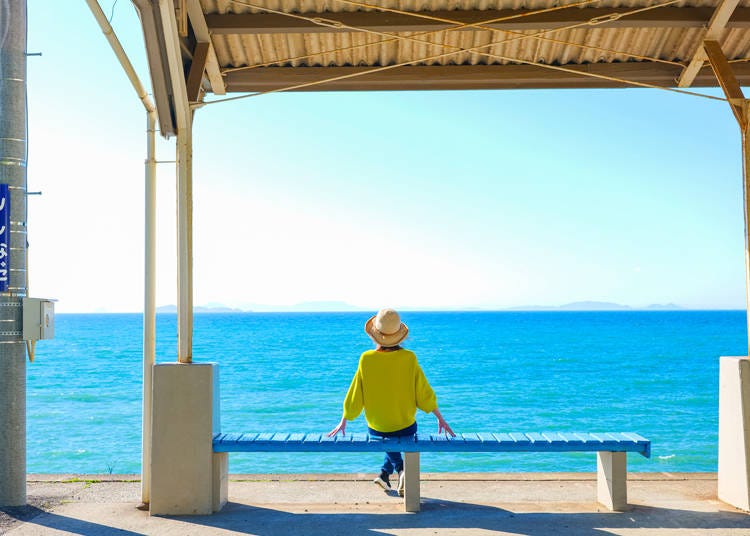
The saying it’s about the journey, not just the destination is especially true on Japan’s scenic train routes. They’re unbeatable when you want to move without really going anywhere.
On the way to Shimonada Station in Shikoku, you’ll take in sweeping views of the coastline, and it almost feels like you’re skimming the sea. The station itself is little more than a bench and a view, but the sunsets are otherworldly, straight out of an anime frame.
The Tokyo to Kamakura route is short but calming too. You pass through quiet suburbs, then trees, and finally, the sea appears just before you pull in. Up north, Asari, near Otaru in Hokkaido, winds past postcard-perfect scenes of snowy cliffs and frozen beaches in winter.
Get Ready for Your Solo Adventure
Solo travel in Japan lets you slow down. You explore at your own pace and start noticing what you'd miss in a group: a half-hidden shrine down an alley, the sound of your footsteps on a temple path, and a delicious bowl of ramen in an unassuming eatery, slurped in silence.
Once you’ve had a taste of solo travel, there’s a good chance you won’t want to go back to group trips. Fair warning, it’s addictive.
Himanshi is a seasoned travel writer, photographer, and graphic designer. After graduating from Ecole Intuit Lab in 2015, she began designing for global brands. Drawn by Japan's landscapes and culture, she traveled extensively—from Tokyo's neon-lit streets to the peaks of Hokkaido. She's also lived in the Seto Inland Sea and volunteered in Fukushima. Through her blog, Nomadic Travelscapes, Himanshi uncovers stories rooted in authenticity instead of influencer-led experiences. Her work has been exhibited at Nox Gallery, Tokyo.
- Category
*Prices and options mentioned are subject to change.
*Unless stated otherwise, all prices include tax.
Popular Tours & Activitiess
Recommended places for you
-
Events

Sunflower terminal (Osaka) Terminal 1
Other Sightseeing
USJ, Nanko Port
-

Kambei Sannomiyahonten
Yakiniku
Kobe, Sannomiya, Kitano
-
Appealing

Rukku and Uohei
Izakaya
Sapporo / Chitose
-

Jukuseiniku-to Namamottsuarera Nikubaru Italian Nikutaria Sannomiya
Izakaya
Kobe, Sannomiya, Kitano
-

ANO-NE Kids Club
Other Sightseeing
Ginza
-
Goods
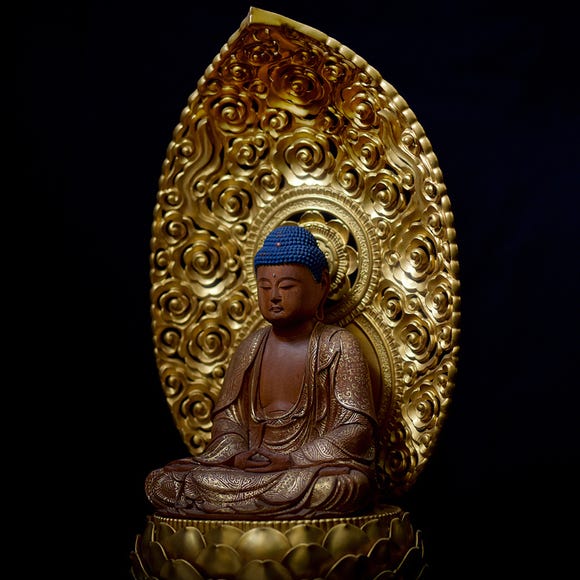
Yoshida Gennojo-Roho Kyoto Buddhist Altars
Gift Shops
Nijo Castle, Kyoto Imperial Palace
-
Ad

Ohta’s Isan Gets a Refresh: Introducing the New Ohta’s Isan S and Ohta’s Isan <Sachet> S with Updated Packaging and Improved Benefits
-
Ad

Just 2 Hours from Tokyo! Enjoy Ibaraki’s Breathtaking Ocean Views, Flowers & Autumn Leaves on Private Tours
-
Ad

Okinawa Travel Troubles? Guide to the MCC Hotline for Illness and Weather Emergencies
-
Ad

Feeling Unwell While Traveling? HOTEL de DOCTOR 24 is Japan's Sole 24-Hour Online Medical Consultation Service
-
Ad

Get Your Perfect Custom Suit at GINZA Global Style PREMIUM Ginza Honten: Choose from 5,000 Fabrics, Starting at 26,400 Yen (incl. tax)!
-

A Don Quijote Like No Other: Step Inside the All-New Tourist-Friendly Store at Shinjuku Tonanguchi Bekkan
by: Chehui Peh
-

Sightseeing Along the Nankai Railway: From Osaka to Wakayama
-

Hakodate 2-Day Itinerary for Exploring Japan's Foodie North!
-

The past and present of Shinjuku
-

Akita Bucket List: 20 Best Things to Do in Akita Prefecture For Tourists (Attractions, Local Foods & Activities)
-

Chazen: the Authentic Japanese Tea Ceremony Experience in the Heart of Ginza
-

Osaka Travel Service Center: So Many Incredibly Convenient Services - in English!
by: WESTPLAN
- #best sushi japan
- #what to do in odaiba
- #what to bring to japan
- #new years in tokyo
- #best ramen japan
- #what to buy in ameyoko
- #japanese nail trends
- #things to do japan
- #onsen tattoo friendly tokyo
- #daiso
- #best coffee japan
- #best japanese soft drinks
- #best yakiniku japan
- #japanese fashion culture
- #japanese convenience store snacks






























